
It allows to keep PV going, with more focus towards AI, but keeping be one of the few truly independent places.
-
I have been admiring your assiduous work and your readiness to share each episode with us. What makes the ongoing story more compelling is that you've sought our advice at times.
At first I wondered whether you'd gone through thorough testing at the design stage; now, as you reveal your fast-tracked, metal apprenticeship, I realise what a dark horse you are.
As a self-paced novel, this is character development wound around a techie theme. As media, it's a compelling, new genre. I hope the project's a success and a book sales income will help recover your investment.
-
@psyco I dont hv a problem and I am secure in who I am. Btw I dun stinge on my gear either. If you want to play in the big league learn to save up and buy real equipment. I use red rock and manfrottos, not DIY stuff that kids use in schools :)
-
-
My "rig" - Not a "cinema", but "typical run around an event" rig...
I still had my Zacuto eyepiece and I wanted to use it with my cage, so I got an articulating arm with a 15mm rod clamp w/ 1/4-20 and voila! I sealed it with black paper tape. and I think it looks pretty cool.
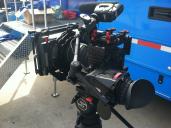
 IMG_0857.jpg2592 x 1936 - 3M
IMG_0857.jpg2592 x 1936 - 3M
 IMG_0858.JPG2592 x 1936 - 2M
IMG_0858.JPG2592 x 1936 - 2M -
So, I wanted to give short update about the wireless focusing system (especially after seeing this http://www.personal-view.com/talks/discussion/5015/wondland-wireless-follow-focus-system-on-ebay ).
I tryed the USB backchannel of the wireless HDMI system and was even thinking of using the remote control backchannel, but non of these worked the way I need it, so I gave up that idea and had a look at the wireless options for the Arduino.
Its really freaking easy. I'm using a Xbee transmitter/receiver on both Arduinos and setting it up is a walk in the park. The system consists now of:
2 Arduino boards (blue boards at the bottom with USB connectors)
2 Xbee breakout shields and Xbee modules (blue boards on top with small antenna)
stepper motor shield (red board)
stepper motor
puls encoder (bare encoder, knob not installed)
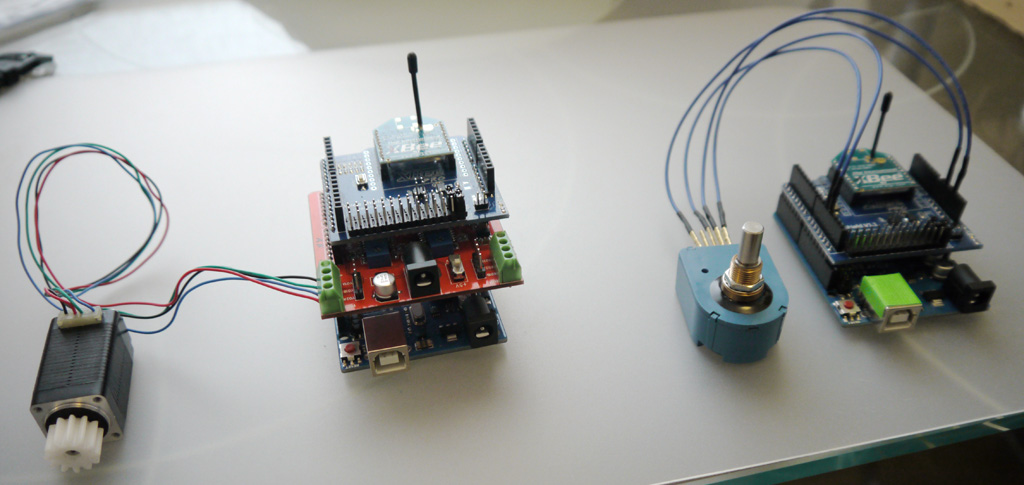
All in all, about $200 and I was not looking for the best price (good documentation was more important for this first parts).
The puls encoder has a resolution of 500 pulses per revolution. The position of the knob is processed by the Arduino and then send via the Xbee modules to the other Arduino. There the position is used as the mark where the stepper motor will stop. Its easy to modify the relation between input and output speed, so setting the motor to turn faster or slower than the input knob is no problem. Even recording focus pulls and then playing them back would be no problem. And it always works perfectly repeatable and to a precision of < 1° .
The only problem I have at the moment is the small stepper motor. As mentioned above, Olympus refuses to un-dampen there lenses and the Nema8 motor is just at its limit by pulling the fokus ring of my 14-35mm F2.0 - it is no problem using the motor with my Tokina 11-16mm F2.8 so. The controller board can handle much bigger motors, but I can't fit a bigger motor under the huge Olympus lens.
I'm working at a solution to this last problem: Buying or building a ring motor. A stepper motor that goes direktly around the lens. There would be no need for cog wheels, there would be no play and it can be very silent.

 Wireless-Setup.jpg1024 x 485 - 151K
Wireless-Setup.jpg1024 x 485 - 151K -
@rockroadpix Looks like a very compact rig - perfect for run n' gun situations.
-
Buying or building a ring motor.
A brilliant idea and a simplified, elegant design. I don't know if IntelliDrives manufacture anything that will suit exactly, but they'll point you in the right direction.
I expect you to go on to think up simpler ways to control it, too - based on your current prototype. Great work!!
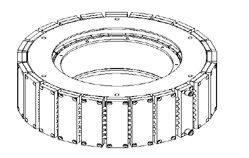
-
I am still very interested into DIY wireless FF. Do you plan share project details and code for arduino? Did you try planetary gears on the stepper?
-
@goanna Thanks! After doing some research, it seems I will have to make the motor myselfe.
(After trying to get several parts for my rig from specialized companies, I can say: German companies have to much money and are not interested in business, they are fucking stupid!)
The basic design is already finished, I'm now trying to get the parts.
@Meierhans I'm not sure about sharing to many details - if its for the regular members of this forum (like you), I would have posted all plans already. But I don't want to see my hard work beeing used by companies selling it for a lot of money without even giving me credit for it. Designing the aluminium parts or writing the code for the Arduino took a long time, was a lot of work and needed quiet some skill. I want to keep the option of selling this knowledge or even starting to produce some type of wireless FF myselfe.
But don't worry, you can just make your own programm doing pretty much the same as mine by copy/paste-ing the code from the examples that come with the Arduino and using there libraries - it will be much bigger and a bit slower, but I think it will still work. (Use a potentiometer instead of the puls encoder - not as precise, but you get sample code for free.)
I can't use any additional gears with the stepper motor, as its already quiet slow - doing only 1.8° steps and having a limited maximum step frequency it would just be fast enough for good focus work as it is now. Using gears and slowing it further down would make fast or rack focusing impossible. And as it seems, there are no 7.5° stepper motors in that size avaluable.
-
hey @psyco ! any progress on the follow focus? I am still waiting for somebody to come up with something wireless and fordable... thanks!
-
@CHARPU I'm so busy working on the remote FF that I had no time writing an update but I can give a small overview.
The first version was already tested at a small film project at school. It was still all in a very early prototype stage but worked just fine:
Remote with 7-digits-display and receiver (open to prevent it from overheating)
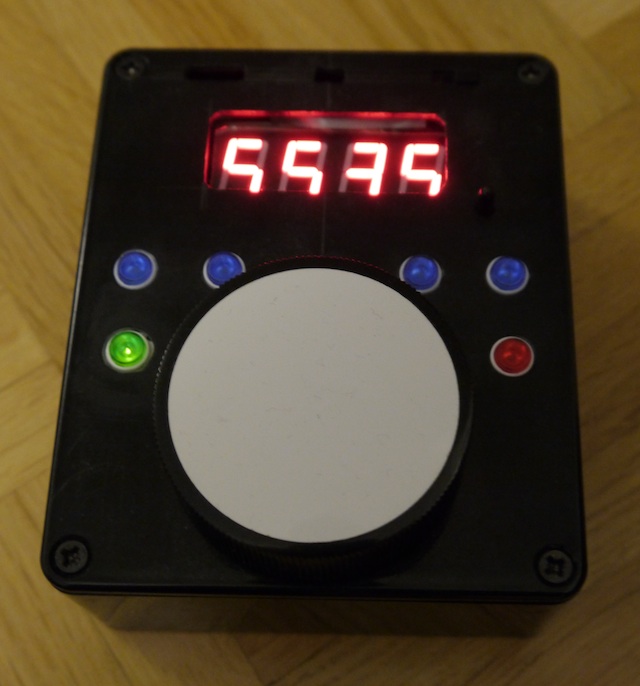
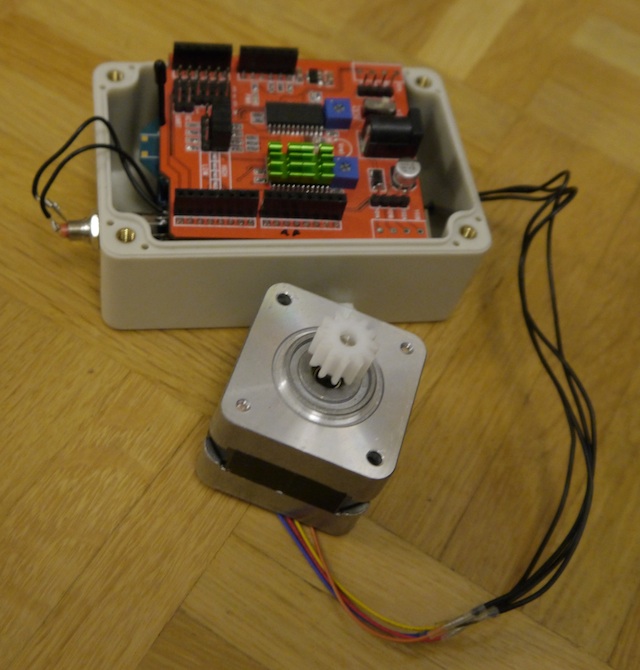
I'm now using a bigger stepper motor that just fits at the side of the big lenses with no additional gear. The ring motor is still not finished as I'm having serious problems with the glue (!) as it can't hold the tiny but freaking strong magnets in place - maybe I can finish it during the next holidays.
At the moment I'm working on the new version of the remote and receiver - smaller, more durable, better displays,...
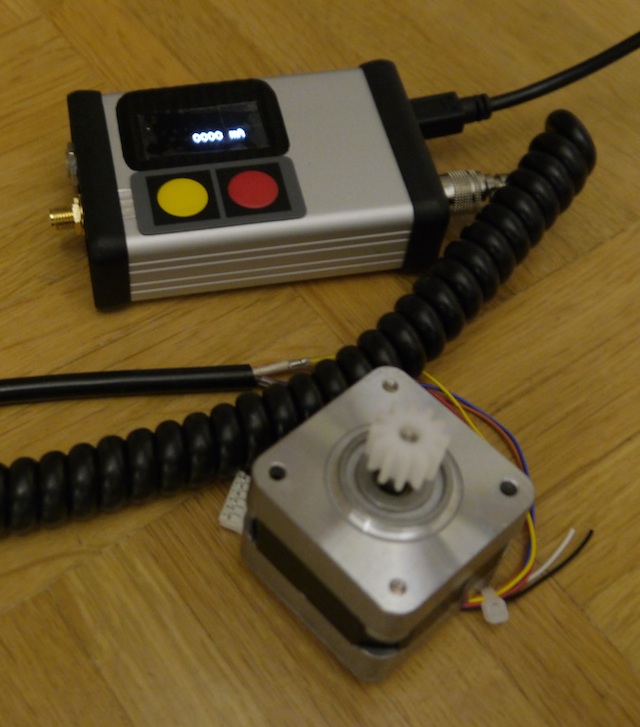
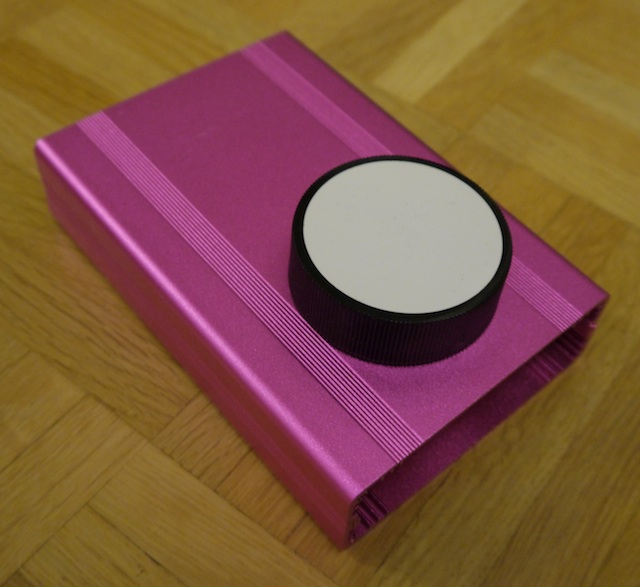
@Vitaly_Kiselev I chose proper colour for the remote ;-)

 Sender.jpg640 x 686 - 81K
Sender.jpg640 x 686 - 81K
 Empfanger.jpg640 x 670 - 107K
Empfanger.jpg640 x 670 - 107K
 EmpfangerNeu.jpg640 x 727 - 107K
EmpfangerNeu.jpg640 x 727 - 107K
 SenderNeu.jpg640 x 587 - 83K
SenderNeu.jpg640 x 587 - 83K -
I chose proper colour for the remote ;-)
Looks cool.
What do you think about idea to use cheap Android smartphone with capacitive screen and special application as remote? So your preset position will be visible as lines, and you can use your finger movement instead of wheel.
-
I'm not a fan of touchscreens as you always have to look at it when using it. A (big) knob and some buttons you can feel is something I prefere, so you can concentrate on the video picture not the tool.
But for strikt preset curves a smartphone or laptop would be ok.
-
@Psyco Awesome colour --- I think you'll find many people prefer a big knob!
Howdy, Stranger!
It looks like you're new here. If you want to get involved, click one of these buttons!
Categories
- Topics List23,964
- Blog5,723
- General and News1,342
- Hacks and Patches1,151
- ↳ Top Settings33
- ↳ Beginners254
- ↳ Archives402
- ↳ Hacks News and Development56
- Cameras2,361
- ↳ Panasonic990
- ↳ Canon118
- ↳ Sony154
- ↳ Nikon96
- ↳ Pentax and Samsung70
- ↳ Olympus and Fujifilm99
- ↳ Compacts and Camcorders299
- ↳ Smartphones for video97
- ↳ Pro Video Cameras191
- ↳ BlackMagic and other raw cameras121
- Skill1,961
- ↳ Business and distribution66
- ↳ Preparation, scripts and legal38
- ↳ Art149
- ↳ Import, Convert, Exporting291
- ↳ Editors191
- ↳ Effects and stunts115
- ↳ Color grading197
- ↳ Sound and Music280
- ↳ Lighting96
- ↳ Software and storage tips267
- Gear5,414
- ↳ Filters, Adapters, Matte boxes344
- ↳ Lenses1,579
- ↳ Follow focus and gears93
- ↳ Sound498
- ↳ Lighting gear314
- ↳ Camera movement230
- ↳ Gimbals and copters302
- ↳ Rigs and related stuff272
- ↳ Power solutions83
- ↳ Monitors and viewfinders339
- ↳ Tripods and fluid heads139
- ↳ Storage286
- ↳ Computers and studio gear560
- ↳ VR and 3D248
- Showcase1,859
- Marketplace2,834
- Offtopic1,319









